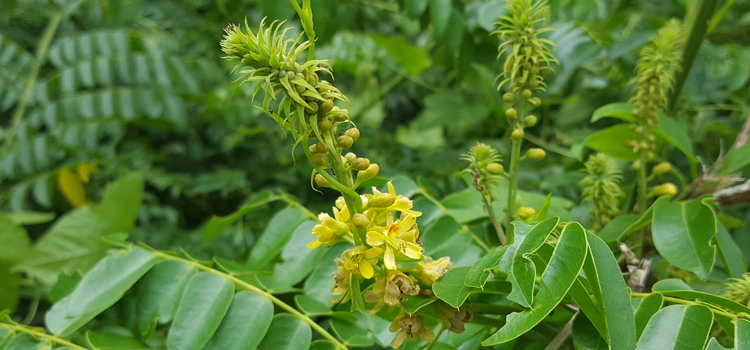The Vitality Centre invited a panel of speakers to share their experiences on this complex topic.
Dr. Brian Walker, a medical practitioner, explained how the process of successful conception really is very complicated – perhaps the question should be how strange that we can reproduce, rather than how strange it is when there are problems.
Jennifer Walker, a naturopath, medical herbalist and NLP master practitioner gave us an overview of the topic. Jennifer explained that the average time for a pregnancy to occur is within 4-6 months, 80% of couples conceive within 18 months and 90% within 2 years. Even if intercourse takes place over the woman’s fertile period there is only a 20% chance that in young couples conception will occur, and with each passing year over the age of thirty the chances diminish even further. Jennifer explained that subfertility is either reduced or impaired fertility (such as miscarriage) or when no medical cause can be found. This differs from infertility or sterility which is physiological in nature – abnormalities that make it impossible to conceive or to hold a pregnancy.
Factors that can affect fertility
In males:
– An absence of sperm
– Congenital defects
– Blockages of the epididymus or vas deferens
– Testicular damage
– Retrograde ejaculation
– Impotence
In females:
– Blockages of, or absence of, fallopian tube
– Absence or abnormality of reproductive organs
– Absence of ovulation
S.T.D.s (Sexually Transmitted Diseases) ie chlamydia, gonorrhea, can cause infertility in both sexes
Modern advances with microsurgery and assisted conception have enabled the miracle of a baby to many infertile couples. It is interesting to note, however, that even with this high tech approach such as IVF the success rates are only about 13-22%. No importance, for instance, is attached to the nutritional status of either partner, whereas even a simple nutritional regime followed ideally 4-6 months before conception through to pregnancy and birth can increase the chances of successful conception, trouble free pregnancy and the birth of a healthy baby.
Considerations When Dealing With Fertility
THE MIND
Depression, negative feelings, guilt, fear – issues around body image (over exercising/very low body fat), guilt over past abortions, fear of the birth process
NUTRITION
Insufficient nutrient foods, high consumption of processed foods, additives in foods – there are over 4000 mutagens now used in processed foods which can affect chromosomes and genes. GM foods – resulting in increased pesticide exposure. Irradiated foods – most vitamins, amino acids destroyed, free radical damage, electron damage. Allergies – which compromise general health and so affect fertility. Candidiasis – which can affect the cervical mucous making it hostile to sperm.
THE PILL
Resulting in lowered resistance to infections including G.U. and fungal infections, increased risk of etopic pregnancy and miscarriage – this can occur long after stopping the pill unless nutrient and hormonal levels have been corrected. Mineral and vitamin imbalance – nutritionally raises copper, serum vitamin A, reduces magnesium, iron, iodine, zinc, vitamins B, folic acid and C
ENVIRONMENTAL TOXINS
Organophosphates – water soluble generally breakdown quickly, acutely toxic to the central nervous system. Organochlorines – these do not break down in the body, instead they build up in the liver – xeno oestrogens linked to damage of reproductive system, altered levels sex hormones, miscarriage, abnormal/low sperm, low motility, infertility, increased foetal deaths, still birth, defects.
– Heavy metals – linked to subfertility
– Radiation – men exposed to microwaves have increased risk of fathering Downs Syndrome baby
– Electromagnetic fields
LIFESTYLE
Nicotine – tobacco contains more than 400 known poisons, reduced testosterone, affects spermatogenesis, reduces sperm count/motility, a factor in impotency
Marijuana – reduces testosterone/motility/libido, increase in impotency and abnormal sperm, labour complications, low birth weight, chromosomal damage.
Alcohol – impotence, atrophy of testicles, reduced sperm count/motility, compromised egg development, linked to chromosomal abnormalities in baby.
Caffeine – reduced sperm motility, linked to spontaneous abortion.
Heat – inhibits sperm development.
Jennifer prefers to work with both partners taking the following comprehensive approach:
– Nutrition detox/cleanse
– Individualised food allergy investigation
Programmes
– organic diet
– Supplementation
Environment
– avoid synthetic furnishing
– Aim to reduce minimize chemical products/cleaners
Exposure to chemicals
– eliminate PVC packaging
– pets – use chemical free products/flea collars
– plants/gardens
– home renovations
– reduce chlorine exposure – swimming pools/tap water
Lifestyle exercise
– quality sleep/relaxation
– visualization – very powerful, especially following corrective microsurgery
Mind
– Guilt: previous abortion/miscarriage
– Release of fears: of the process, of giving birth, of miscarriage
– Sense of obligation: to society/family
Does this approach work?
Foresight UK claims a success rate of 90%*, and as a practitioner Jennifer has supported the arrival of 9 naturopathic babies.
Inès De Beer, an osteopath, explained that her approach was mainly to work with the physical body and its physiology. As an osteopath, by preparing the pelvic area, osteopaths try to create the optimal environment for conception and birth. In order to stimulate the blood supply she will work on the spine – there is a neurological connection from the dorsal spine to the reproductive organs, and so a blocked joint can lead to atrophy of soft tissue. Inès works by freeing up the joint, using manipulation, re establishing a healthy blood supply and hence improve nutrition to the organ.
The pelvic area is supported by a ligament from the coccyx to the pubis (the pelvic floor) which supports and stabilises every single pelvic organ. If this is weak, incontinence and prolapsed uterus can result. Inès also described soft tissue treatment – visceral manipulation employing gentle techniques to work on the abdomen, areas of tightness, or with adhesions can be located and released. This treatment can impact on the function of the bowel and bladder, small and large intestine as well as the reproductive organs. Scar tissue resulting from previous abdominal operations or trauma can be treated with connective tissue-release and will be eliminated by the lymphatic system. Cranial osteopathy may also be helpful which can have an influence on the pituitary gland (hypothalamus) and so stimulate the endocrine function. Inès finished by suggesting a visit to an osteopath may be indicated after abdominal or lower back surgery, in case of low back pain, or if a direct trauma occurred to the pelvic region or head (whiplash can affect the lower back) in order to create an optimal environment for the foetus to grow in.
Dr. Cecilia Thé, Chinese medicine practitioner, challenged our understanding of the concept of yin and yang. Commonly thought of as opposites – yang hot, yin cold – what is often forgotten is they can transform, becoming the other. It can be thought of as the shady and sunny side of the mountain, with the knowledge that each can transform into the other. They are opposites, both interdependent and relating to each other like the opposite ends of a seesaw. Men tend to be more yang, women more yin. Conception is the mixing of these two energies the vigorous ‘yang’ sperm combining with the ‘yin’ egg. Cecilia theorized that sometimes in apparently otherwise healthy couples it can be the contrast in these two energies that can prevent conception, requiring a ‘warming’ (strengthening the yang energy) approach to the women and a ‘cooling’ (strengthening the yin energy) approach to the man. She spoke about the importance of kidney jing and touched on the concept of flow of Qi and Blood. Cecilia also explained that TCM can be used in conjunction with western medicine approaches to good effect.
Anisa Abdoolcarim, a kinesiologist, explained that the body holds all information, and with the help of muscle response testing (MRT) we can find out what is happening and how we can heal. Blocks to becoming pregnant may be due to emotional issues from the past, perhaps feeling we cannot be the perfect mother, or unresolved guilt and anger from a previous abortion or miscarriage. It is important to be single minded about what we want, and kinesiology can help us to get in touch with beliefs that may unconsciously be sabotaging us. Kinesiology can also be used to test for nutritional deficiencies.
Our thanks to Jennifer Walker, Brian Walker, Inès De Beer, Cecilia Thé and Anisa Abdoolcarim for generously giving their time, and sharing their expertise.
Suite 801 Commercial House
35 Queen’s Road Central, Hong Kong
Tel: +852 2537 1118
Foresight – Association for the Promotion of Preconceptual Care
First established in 1978, Foresight is a charitable organisation based in the UK whose primary role is to promote the importance of good health and nutritional status in both parents before conceiving a baby, and to provide sensible, achievable information and advice on how to do this.
Foresight 1990-1993 Study found that out of a group of 367 couples 327 (89%) of the women had become pregnant and 327 healthy babies were born.
28 The Paddock, Godalming, Surrey GU7 1XD
TEL +44 01483 427839 FAX +44 01483 427668
www.foresight-preconception.org.uk
Know Your Fertility Cycle
It is helpful for women to get to know their cycle, by noticing the change in vaginal discharge at different times of the month, and by taking their temperature every morning before getting out of bed. When ovulation occurs the temperature will rise by 0.2 – 0.5C. Since the egg survives for only 36 hours after ovulation, and sperm for 2-3 days, fertilization depends on timing. The best chance of conceiving is to have intercourse 12-24 hours before ovulation. There are kits available from pharmacies to detect ovulation by testing urine. Men with a low sperm count may find that splashing the testicles with cold water a couple of time a day will help to maintain the right temperature for sperm production.

